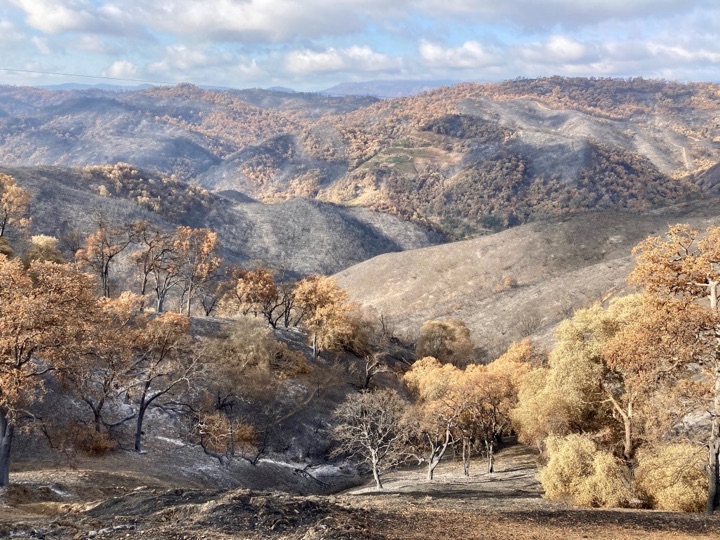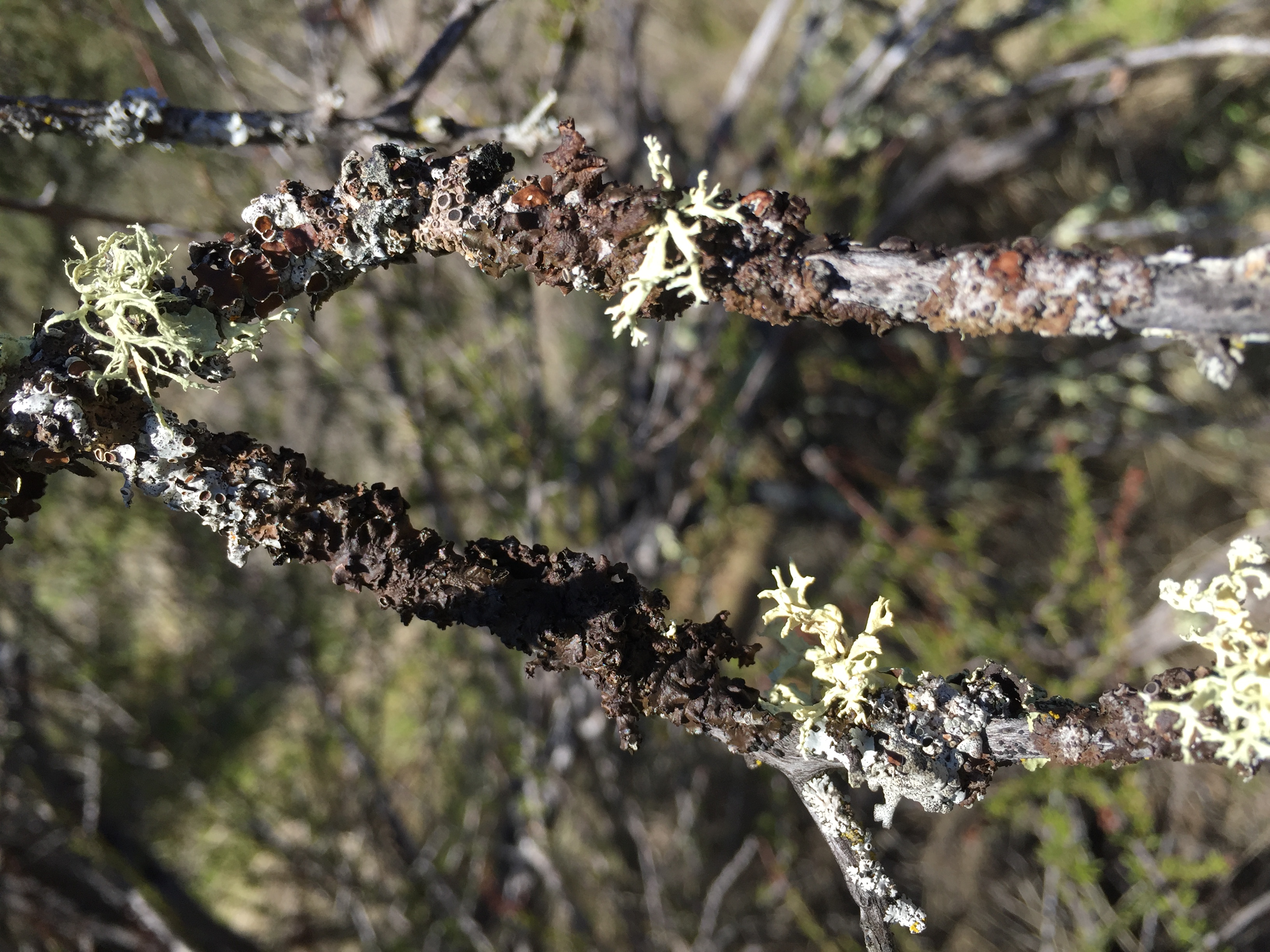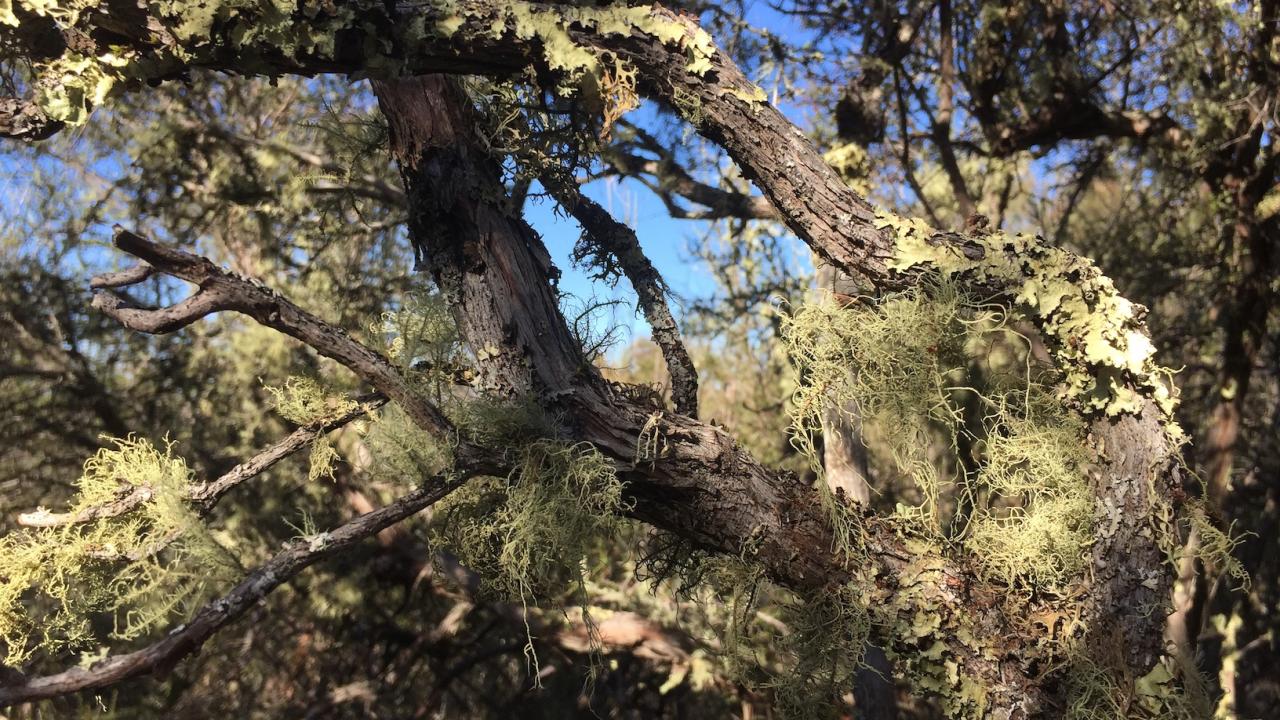Lichen communities may take decades — and in some cases up to a century — to fully return to chaparral ecosystems after wildfire, finds a study from the University of California, Davis, and Stanford University.
The study, published today in the journal Diversity and Distributions, is the most comprehensive to date of long-term lichen recolonization after fire.
Unlike conifer forests, chaparral systems in California are historically adapted to high-intensity fires — they burn hot, fast and tend to regenerate quickly. However, with more frequent fires predicted under a drier, warming climate and more ignitions occurring amid a growing human population in these areas, the study indicates that lichen communities may not receive the window of opportunity they need to return to chaparral shrublands after wildfire.
“In chaparral systems, lichens can come back 20 to 30 years after fire, but if you get into more frequent burning several times in a short time period, it may be there isn’t a place for these lichens,” said co-leading author Alexandra Weill, who conducted the research while a graduate student researcher in the UC Davis Department of Plant Sciences.

Overlooked and all around
Lichens are complex organisms born from a symbiosis of fungi and algae. Overlooked and yet all around, they present a variety of colorful and intricate shapes and patterns along the rocks, branches and floor of forests and other biomes. They not only provide food for wildlife, they also help retain moisture in their environments — an increasingly important service in dry chaparral systems.
“There’s also value to biodiversity itself,” said co-leading author Jesse Miller, a UC Davis postdoctoral researcher at the time of the study and currently a lecturer at Stanford. “In our study, plant diversity was low under the dense shrub canopy. But we could find dozens of lichen species in the same area. If we lose these lichens, we’re losing a lot of the actual biodiversity that’s there.”

Not ‘lichen’ frequent fire
To test how lichens recolonized in chaparral systems after fire, the scientists in 2018 sampled lichen communities at two UC Davis natural reserves — Quail Ridge and nearby Stebbins Cold Canyon in Napa and Solano counties. Using records from CAL FIRE and Quail Ridge Reserve, they identified fire boundaries that occurred within the reserves since 1950. They sampled five fires: the 1953 T. Viue Fire, 1988 Resort Fire, 2005 Pleasure Fire, an unnamed 1996 fire and the 2015 Wragg Fire.
After identifying plots to survey at these locations, they crawled under the chaparral to document every lichen species they could find and its abundance.
They found that fire-intolerant species like lichens may be slow to recolonize landscapes after high-severity fire. Most chaparral lichen taxa could be lost if fire intervals shorten to less than 20 years, which has already occurred in some parts of California, the study said.


Old-growth chaparral
The researchers also compared the species richness of lichens found in these previously burned areas to old-growth chaparral sites with no recorded fire history. They found such old-growth vegetation may promote biodiversity, and the study highlights its value.
“Old-growth chaparral doesn’t have the charisma of a redwood forest,” Miller said. “Most people wouldn’t recognize it as a 100-year-old plus mini-forest if they walk by. But all ecosystems have old-growth states of unique species that don’t occur in areas of recent disturbance. Our study builds on the idea that we need to recognize the value of communities that take a long time to form.”

Management strategy
The study suggests a land management strategy that aims for “a well-maintained mosaic of land types,” including areas of old-growth chaparral and areas that are managed with prescribed fire. Such a strategy, when paired with prevention and home protection efforts, could help reduce fire risk while maximizing cultural and ecological value.
“For most Californians, chaparral shrublands are the closest and most accessible ecosystems we have,” said Weill. “If you’re going to Mt. Tam, you’re hiking in chaparral. If you’re hiking in LA, you’re in chaparral. For the average Californian, this is what’s most likely in your backyard. But that’s also what makes it an issue because these are the fires threatening your home.”
The study was funded by the California Lichen Society.
Media Resources
Media Contacts:
- Jesse Miller, Stanford University, jedmiller@ucdavis.edu
- Alexandra Weill, UC Davis Plant Sciences, amweill@ucdavis.edu
- Kat Kerlin, UC Davis News and Media Relations, 530-750-9195, kekerlin@ucdavis.edu
Images:
Photo at top: Old-growth lichens attach themselves to a tree branch at the Quail Ridge Reserve. A UC Davis study highlights the value of old-growth chaparral systems to local biodiversity. (Jesse Miller)
